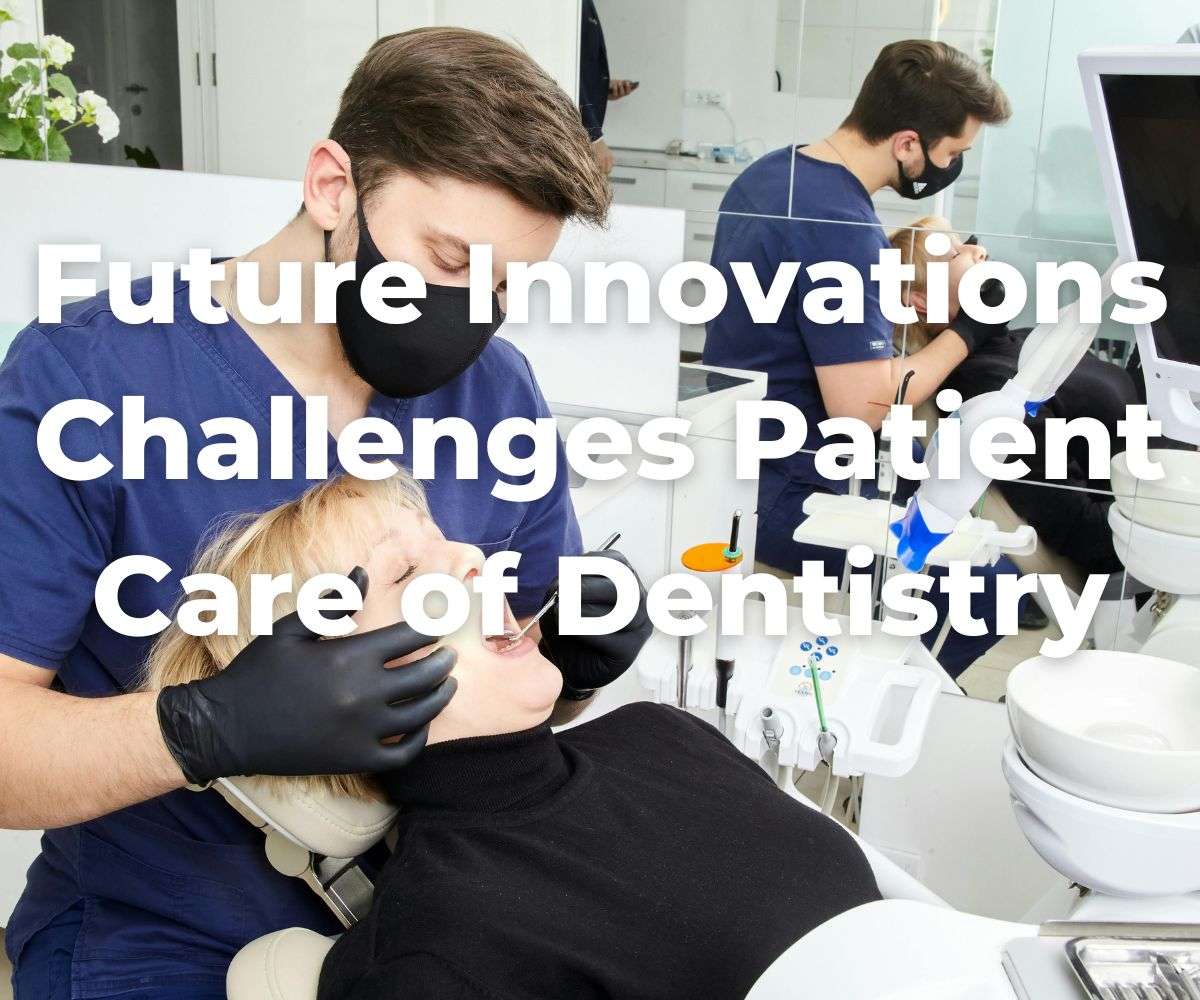future innovations challenges patient care of dentistry
Description
The Future of Dentistry: Innovations, Challenges, and Patient Care Introduction
Dentistry has come a long way from its early days of crude tooth extractions and rudimentary restorations. Today, it stands at the forefront of healthcare innovation, blending technology with patient-centered care.
With advancements in artificial intelligence (AI), digital dentistry, and minimally invasive procedures, the field is evolving faster than ever. In this comprehensive blog, we will explore the latest trends, challenges, and opportunities in modern dentistry, as well as how patients can benefit from these advancements.
Dr. Akshay Bandewar is a renowned implantologist specializing in dental implants in Mumbai, India, with over 13 years of experience in advanced dentistry. He excels in digital dentistry, AI-powered diagnostics, and minimally invasive treatments, staying at the forefront of innovation.
In this blog, he shares valuable insights into the evolution of dental care and what the future holds for both patients and practitioners.
The Evolution of Dentistry
Dentistry has a rich history that spans thousands of years. Ancient civilizations such as the Egyptians and Romans used primitive tools to manage oral health problems.
Over time, dentistry evolved into a specialized field of medicine. Some key milestones include:
The invention of the first dental drill in the 18th century
The introduction of anesthesia in the 19th century, making dental procedures less painful
The development of X-ray technology, which revolutionized diagnostics
The rise of cosmetic dentistry and dental implants in the 20th century
The advent of digital dentistry and AI in the 21st century
Latest Innovations in Dentistry
1. Digital Dentistry and 3D Printing
Digital dentistry has transformed the way dentists diagnose and treat patients. Technologies such as intraoral scanners, 3D printers, and computer-aided design/computer-aided manufacturing (CAD/CAM) have revolutionized the field.
Benefits of Digital Dentistry:
Faster, more accurate impressions
Same-day restorations with CAD/CAM technology
Improved patient experience and comfort
Enhanced treatment planning with digital models
3D printing is particularly changing the way dental prosthetics and implants are created. Dentists can now print crowns, dentures, and even orthodontic aligners in-house, reducing costs and improving efficiency.
2. Artificial Intelligence (AI) in Dentistry
AI-powered tools are enhancing diagnostic capabilities, patient management, and even treatment planning. AI can analyze radiographs, detect cavities, and even predict potential oral health issues before they become severe.
AI Applications in Dentistry:
AI-assisted diagnosis for oral diseases
Virtual treatment planning for orthodontics
Automated patient scheduling and follow-ups
Personalized treatment recommendations based on patient data
3. Laser Dentistry
Lasers are becoming an integral part of modern dentistry, offering minimally invasive solutions for various dental procedures.
Uses of Laser Dentistry:
Painless cavity removal
Treatment of gum disease with minimal bleeding
Teeth whitening without sensitivity
Soft tissue surgeries with faster healing times
4. Teledentistry
With the rise of telemedicine, teledentistry is making dental care more accessible. Patients can now consult dentists remotely through video calls and get professional advice without visiting a clinic.
Advantages of Teledentistry:
Convenient consultations for busy patients
Early detection of dental problems
Reduced need for in-person visits for minor concerns
Increased accessibility for patients in rural or remote areas
5. Biomaterials and Regenerative Dentistry
Regenerative dentistry is an exciting field that focuses on restoring damaged teeth using biological materials. Scientists are developing bioengineered tooth structures that could one day replace traditional fillings and crowns.
Current Research in Regenerative Dentistry:
Stem cell therapy for tooth regeneration
Biomimetic materials that mimic natural tooth enamel
Growth factor-based treatments for gum and bone regeneration
The Growing Importance of Preventive Dentistry
With advancements in dental care, there is a greater emphasis on prevention rather than treatment. Preventive dentistry involves regular check-ups, proper oral hygiene, and early intervention to avoid major dental problems.
Key Aspects of Preventive Dentistry:
Professional cleanings to remove plaque and tartar
Fluoride treatments to strengthen enamel
Sealants to prevent cavities in children
Early orthodontic intervention to prevent complex dental issues
Common Dental Procedures and Their Benefits
1. Dental Implants
Dental implants are a highly effective and popular option for replacing missing teeth, offering a permanent and natural-looking alternative to dentures and bridges.
Benefits of Dental Implants:
Long-lasting and durable solution
Prevents bone loss in the jaw
Restores normal chewing and speech functions
Enhances facial aesthetics
2. Teeth Whitening
Professional teeth whitening treatments help patients achieve a brighter smile by removing stains caused by coffee, smoking, or aging.
Advantages of Professional Whitening:
Safe and effective treatment
Long-lasting results
Customized approach for different levels of discoloration
3. Root Canal Therapy
A root canal is performed to save a tooth that is infected or severely decayed. The procedure involves removing the infected pulp, cleaning the tooth, and sealing it with a crown.
Why Root Canals Are Important:
Prevents tooth loss
Eliminates pain and infection
Restores normal tooth function
4. Orthodontic Treatments (Braces & Clear Aligners)
Orthodontic treatments help correct misaligned teeth and improve bite function. Options include traditional metal braces and clear aligners like Invisalign.
Benefits of Orthodontic Treatment:
Straighter teeth and improved smile aesthetics
Better oral hygiene and reduced risk of cavities
Correction of bite issues, reducing jaw strain
The Challenges Facing Modern Dentistry
Despite technological advancements, dentistry still faces several challenges:
1. High Cost of Dental Care
Many patients avoid dental visits due to the high cost of treatments. Even in developed countries, dental insurance does not always cover advanced procedures like implants and cosmetic treatments.
2. Fear of the Dentist (Dental Anxiety)
Dental anxiety is a significant barrier to care. Many patients avoid the dentist due to fear of pain, discomfort, or negative past experiences.
Solutions to Dental Anxiety:
Sedation dentistry for a relaxed experience
Gentle and patient-friendly communication
Use of minimally invasive techniques
3. Oral Health Disparities
Not everyone has equal access to dental care. Rural communities, low-income populations, and elderly patients often face barriers in getting the dental treatment they need.
Future Trends in Dentistry
1. Smart Toothbrushes and AI-Powered Oral Hygiene
Smart toothbrushes with AI technology are helping patients improve their brushing techniques. These devices provide real-time feedback and track oral hygiene habits.
2. Augmented Reality (AR) for Patient Education
AR is being used to educate patients about dental procedures, showing them 3D models of their teeth and potential treatment outcomes.
3. Personalized Dentistry with Genetic Testing
Genetic testing may soon play a role in dentistry by identifying patients who are genetically prone to cavities or gum disease, allowing for customized preventive strategies.
4. The Rise of Eco-Friendly Dentistry
Sustainable dental practices, such as biodegradable toothbrushes, mercury-free fillings, and reduced plastic waste, are gaining traction in the industry.
Conclusion
The future of dentistry is exciting, with groundbreaking advancements improving patient care and treatment outcomes. From AI-powered diagnostics to regenerative dentistry, the field is evolving to make dental care more efficient, accessible, and patient-friendly. However, challenges such as cost and accessibility must still be addressed.
For patients, the key to optimal oral health lies in preventive care, regular dental visits, and staying informed about new treatments. As technology continues to reshape dentistry, the possibilities for a healthier and brighter smile are endless.
Global Statistics on Dental Health and Innovations
Dentistry is evolving worldwide, with technological advancements and increasing awareness about oral health. Here are some key global statistics:
Oral Diseases Prevalence: According to the World Health Organization (WHO), nearly 3.5 billion people suffer from oral diseases, with untreated tooth decay being the most common condition worldwide.
Dental Implant Market Growth: The global dental implant market is projected to reach $8.07 billion by 2028, growing at a CAGR of 7.2%.
Teledentistry Expansion: Studies show that the teledentistry market is growing significantly, with an estimated value of $2.6 billion by 2027, making dental care more accessible.
AI in Dentistry: A recent study found that AI-assisted diagnostics can detect dental issues with 95% accuracy, surpassing traditional diagnostic methods.
Global Orthodontics Demand: The demand for clear aligners (like Invisalign) is expected to rise to $8.2 billion by 2026, driven by patient preference for aesthetic solutions.
Recent Research in Dentistry
Several groundbreaking studies are shaping the future of dentistry:
Stem Cell Regeneration for Teeth: Researchers at Harvard University and the University of Nottingham have developed stem cell-based dental fillings that regenerate damaged teeth, potentially replacing traditional fillings.
AI-Powered Cavity Detection: A study published in the Journal of Dental Research highlighted how AI models trained on dental X-rays can detect cavities at an early stage with over 90% accuracy, reducing the need for invasive treatments.
Smart Dental Materials: Scientists are developing bioactive materials that release calcium and phosphate to remineralize teeth, preventing decay without fluoride treatments.
Personalized Oral Microbiome Treatment: Research from the University of Pennsylvania suggests that customizing probiotic treatments based on a patient’s oral microbiome can prevent gum disease more effectively than standard treatments.
Conclusion
With the integration of AI, regenerative medicine, and teledentistry, the future of dentistry is promising. Patients can expect faster, more precise treatments with less discomfort. However, global accessibility and affordability remain challenges. Research continues to drive innovation, aiming for a future where dental diseases are rare and treatments are more efficient.
Similar blog:
What Justifies the Value of Nutritional Counseling?





















